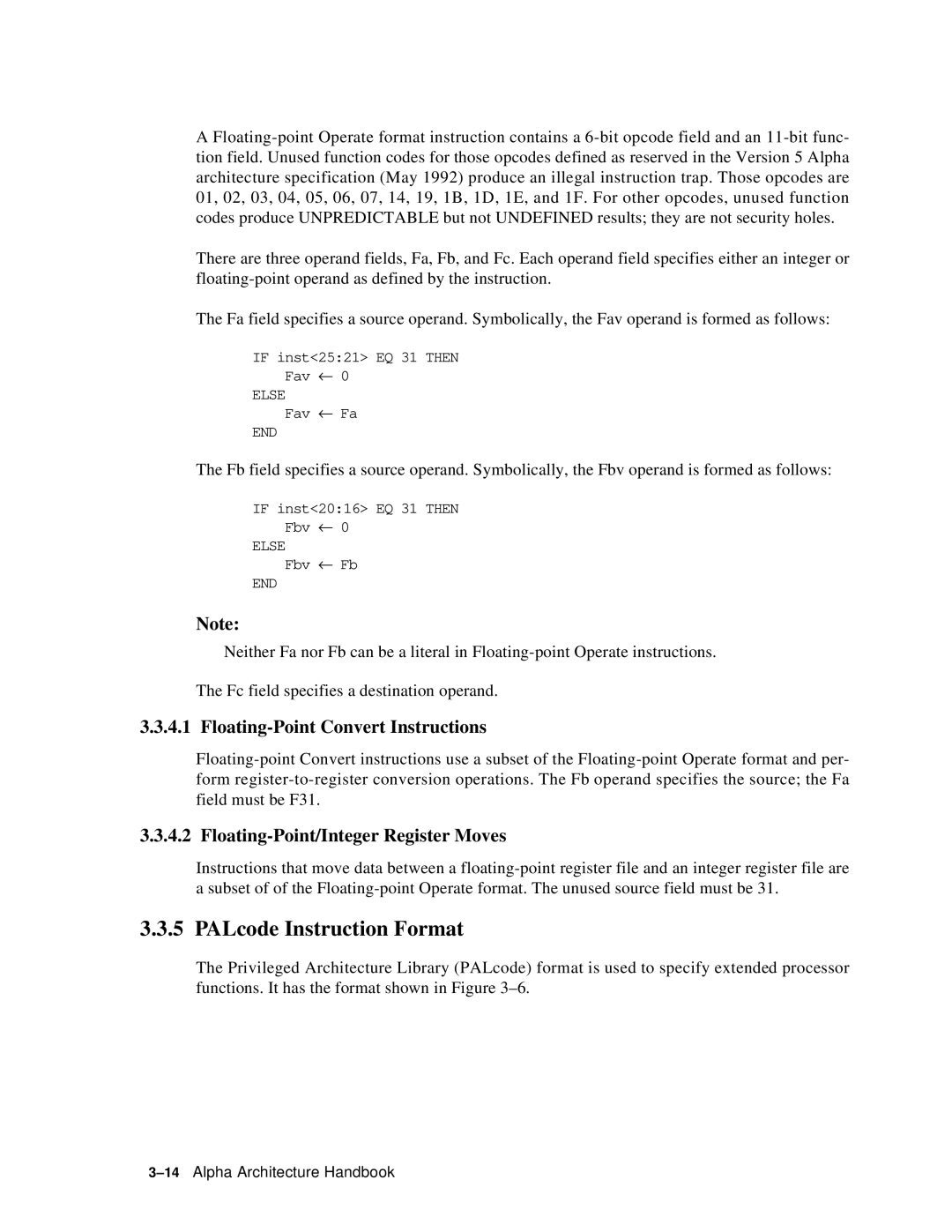A
There are three operand fields, Fa, Fb, and Fc. Each operand field specifies either an integer or
The Fa field specifies a source operand. Symbolically, the Fav operand is formed as follows:
IF inst<25:21> EQ 31 THEN
Fav ← 0
ELSE
Fav ← Fa
END
The Fb field specifies a source operand. Symbolically, the Fbv operand is formed as follows:
IF inst<20:16> EQ 31 THEN
Fbv ← 0
ELSE
Fbv ← Fb
END
Note:
Neither Fa nor Fb can be a literal in
The Fc field specifies a destination operand.
3.3.4.1 Floating-Point Convert Instructions
3.3.4.2 Floating-Point/Integer Register Moves
Instructions that move data between a
3.3.5 PALcode Instruction Format
The Privileged Architecture Library (PALcode) format is used to specify extended processor functions. It has the format shown in Figure
